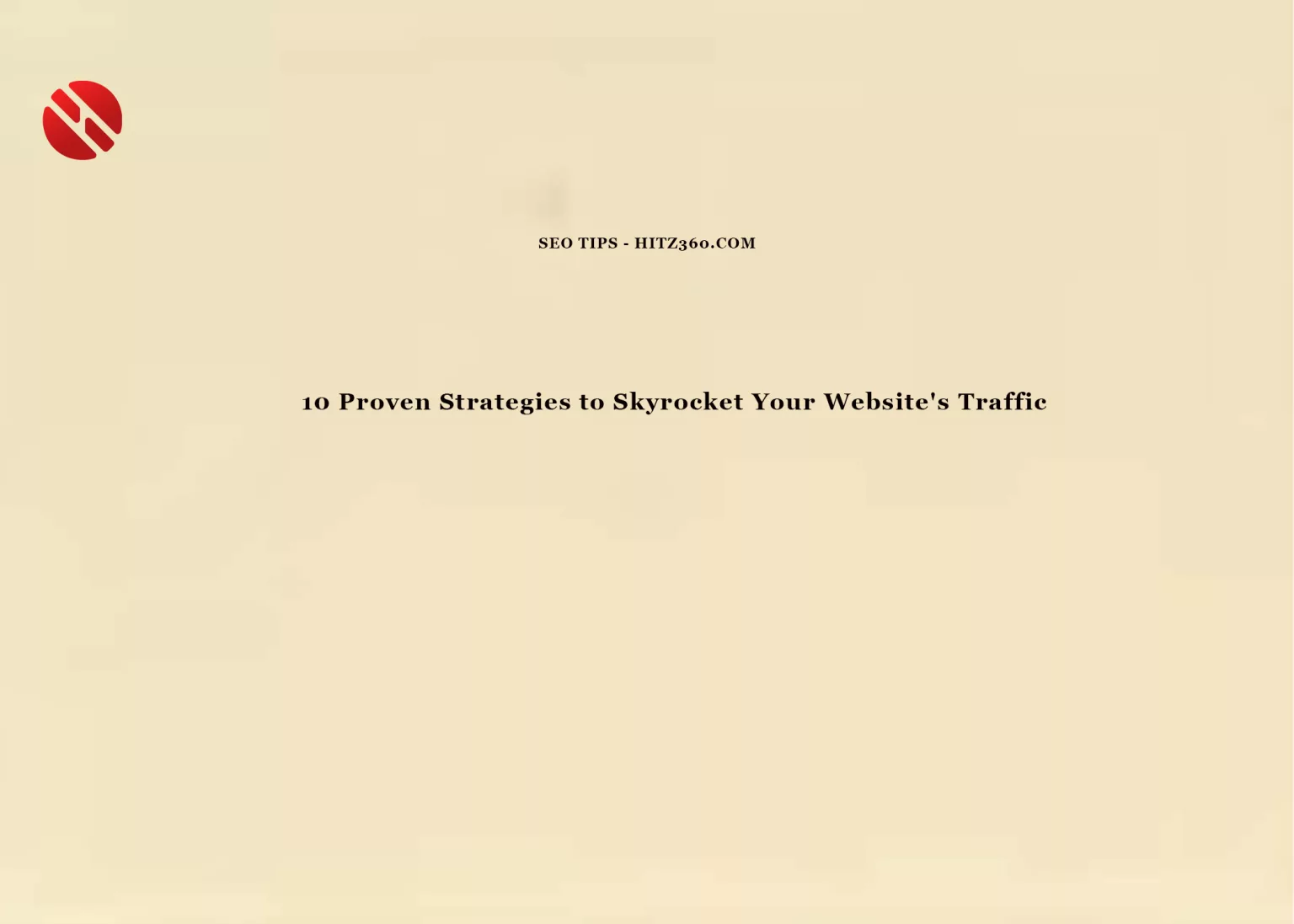Introduction
The internet is a vast and competitive space, with billions of websites vying for attention. Attracting visitors to your site isn’t just about publishing content but it’s about standing out in a crowded digital space. From leveraging SEO to connecting with influencers, this article explores proven strategies to increase website traffic and build a loyal audience.
1. Master the Art of SEO
Search Engine Optimization (SEO) is the backbone of online visibility. It ensures that your website appears prominently on search engine results pages (SERPs). Achieving this involves a combination of on-page, off-page, and technical optimizations.
On-page SEO focuses on optimizing the content on your website. Start by researching keywords that your audience frequently searches for using tools like Google Keyword Planner or SEMrush. Incorporate these keywords naturally into your titles, meta descriptions, and throughout your articles. For instance, if you’re writing about “healthy meal prep,” your title might be “5 Easy Healthy Meal Prep Ideas to Save Time and Stay Fit.”
Technical SEO ensures that your website performs optimally. Slow-loading pages, broken links, and a lack of mobile responsiveness can hurt your ranking. Tools like Google’s PageSpeed Insights can help identify areas for improvement.
Why it Matters: Imagine a shop in a busy marketplace. SEO is like setting up a glowing signboard that directs foot traffic to your store. Without it, your site might remain invisible.

2. Create Exceptional Content
The internet thrives on content. Articles, videos, podcasts, and infographics all contribute to your online presence. However, not just any content will do. The key is to provide value.
When creating content, think about your audience’s needs. Are you solving a problem? Answering a question? Providing entertainment? High-quality content combines depth with readability. For example, instead of writing a generic post like “Best Smartphones,” dive deeper with “Best Smartphones for Photography Enthusiasts in 2024.” Include comparisons, data, and real-world applications.
Additionally, longer-form content tends to perform better. A detailed guide of 1,500–2,000 words that thoroughly covers a topic is more likely to rank higher on Google and be shared across social platforms.
3. Amplify Your Reach with Social Media
Social media platforms like Facebook, Instagram, LinkedIn, and Twitter are powerful tools for driving traffic. But simply posting links won’t suffice, you need a strategy.
Start by tailoring your content to each platform. For instance, LinkedIn is ideal for professional insights and case studies, while Instagram excels with visual content like infographics or behind-the-scenes footage. Engage your audience by responding to comments, running polls, or hosting live Q&A sessions.
A great example is a small business sharing customer success stories on Instagram. By tagging customers and using relevant hashtags, their posts can gain traction and draw visitors back to their site.
4. Build and Nurture an Email List
Email marketing is one of the oldest yet most effective ways to drive traffic. Unlike social media, where algorithms dictate who sees your content, email delivers your message directly to your audience.
To grow your list, offer lead magnets such as free eBooks, discount codes, or exclusive access to content. Once you have subscribers, engage them with personalized newsletters. For example, an eCommerce store might send weekly emails highlighting new arrivals or special offers.
The beauty of email marketing lies in its control. Your audience has already expressed interest, making them more likely to visit your site when prompted.
5. Tap into the Power of Paid Advertising
While organic strategies are essential, paid advertising can give your website a quick traffic boost. Google Ads allows you to appear on search results for specific keywords, while platforms like Facebook or Instagram let you target ads based on demographics, interests, and behaviour.
For example, if you’re launching an online course, you can use a Facebook ad to target young professionals interested in career growth. Pair the ad with a compelling call-to-action like “Sign up today and get 20% off!” to encourage clicks.
6. Guest Posting on Other Sites
Guest posting is a mutually beneficial arrangement where you write for another website in exchange for a backlink or exposure to their audience. This not only drives traffic but also boosts your website’s domain authority.
Identify blogs or websites in your niche and pitch them unique, valuable topics. For instance, if you run a fitness site, you could write an article for a popular health blog titled “5 Underrated Exercises for Maximum Fat Burn.” Include a link back to your site in the article or author bio to encourage readers to visit.
7. Collaborate with Influencers
In an age of influencer marketing, collaborating with industry leaders can open doors to new audiences. Influencers have already built trust with their followers, and their endorsement can translate into increased traffic for your website.
For instance, a skincare brand might partner with a beauty influencer to review their product line. By linking to the brand’s website in the influencer’s content, followers are directed to explore further.
8. Repurpose Content Across Formats
Content repurposing extends the life of your work while reaching audiences across different platforms. A blog post can be transformed into a video tutorial, an infographic, or even a podcast episode.
For example, a travel blogger who writes a post about “Top 10 Destinations in Africa” could create an Instagram carousel or a short YouTube video showcasing highlights from each location. This approach maximizes your reach without requiring completely new content.
9. Engage in Online Communities
Forums like Reddit, Quora, and niche-specific Facebook Groups are goldmines for driving targeted traffic. However, it’s crucial to engage authentically rather than spamming links.
If someone on Quora asks, “What are some effective SEO tips for beginners?” you could write a detailed response and link to your blog post on “SEO Basics: A Guide for Newbies.” Such interactions build credibility and naturally attract visitors to your site.
10. Use Data to Guide Your Strategy
Finally, data analysis is your secret weapon. Tools like Google Analytics provide insights into where your traffic comes from, which pages perform best, and where visitors drop off.
For instance, if your analytics show that most traffic comes from mobile devices, focus on enhancing your mobile site’s user experience. Or, if certain blog posts have high traffic but low engagement, consider adding videos or interactive elements to retain visitors.
Conclusion
Increasing your website’s traffic isn’t a one-size-fits-all solution but it’s about finding the right mix of strategies tailored to your audience. From mastering SEO to collaborating with influencers, the key lies in consistency and continuous improvement. Start implementing these strategies today, and watch your traffic numbers grow

